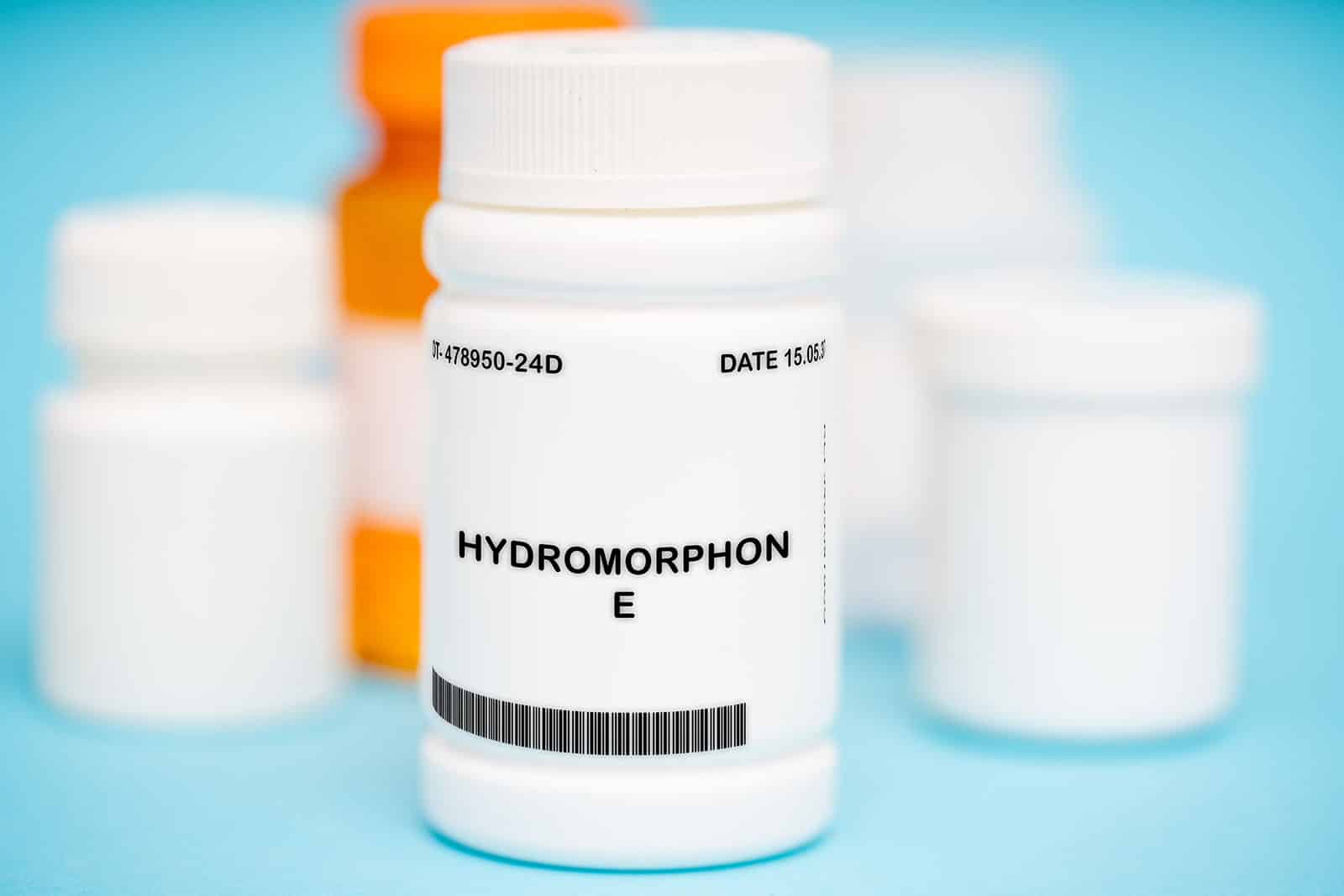Dilaudid, also known as hydromorphone, is used to treat severe pain. As an opioid, it’s vitally important that you take it exactly as directed. Dilaudid should not be taken for mild pain or as needed. Instead, it functions as a long-term pill for extreme pain and is a Schedule II narcotic.
Dilaudid typically stays in your system for up to 90 days. It all depends on the type of drug test that’s used, however. For example, it can be detected in hair for up to 90 days, but it’s typically gone from your saliva within four days. Either way, it’s important to remain aware of Dilaudid’s potential to mess up a drug test. As a narcotic, it will show up in a similar way to heroin. Therefore, be sure you’ve got a doctor’s prescription before attempting to pass a pre-work screening test.
What is Dilaudid?
Dilaudid can provide pain relief for users who suffer from a long-term condition that hasn’t improved with other medication. Again, it’s vitally important to take this medication as prescribed, especially because it changes the way your nervous system and brain respond to pain. As a morphine derivative, Dilaudid works as a morphinane alkaloid. This means it’s one of the most powerful narcotic analgesics available. It serves a role as a mu-opioid receptor agonist and as an opioid analgesic.
This pill is used to treat extreme, long-lasting pain. For instance, if you have cancer, your doctor may prescribe Dilaudid. It has also been prescribed for things such as osteoarthritis, although this usage is controversial. Out of 14 opioids, Dilaudid is the sixth most effective. It’s approximately two-to-eight times stronger than morphine, which holds the 10th spot.
Pharmacokinetics of Dilaudid
Dilaudid is absorbed rapidly from your gastrointestinal tract. For example, if you take an 8 mg tablet, its bioavailability will be approximately 24 percent. It is then distributed and bound to plasma proteins at 8-19 percent. Dilaudid is metabolized extensively via glucuronidation, which is in the liver. More than 95 percent of each dose will be metabolized to hydromorphone-3-glucuronide. This, in turn, is then eliminated by your system. It will clear your body by about 1.96 liters per minute, which will start approximately 2.3 hours after you take your dose.
Speaking of 2.3 hours, this is considered to be the half-life of the drug. In other words, your body will reduce Dilaudid’s active substance by 50 percent within this time frame. This means that it will remain at least somewhat active in your system for approximately 15 hours. However, you will typically have to take Dilaudid every three to six hours in its liquid form, or every four to six hours in its tablet form. Waiting longer than this will bring your pain back.
Factors Affecting Dilaudid Metabolism
Just like with any other medication, there are certain factors that can affect how well your body will metabolize Dilaudid. These include:
- Body weight
- Age
- Liver function
- Kidney function
- Metabolism
- Overall health
For instance, if you have issues with your liver or kidney function, Dilaudid may stay in your system for longer than expected. Age hasn’t been conclusively proven to cause any problems, although older patients may be more sensitive to it. Having severe obesity may weaken Dilaudid’s performance, as can overall poor health.
The dosage you take can also have an impact on your body. Dilaudid is available in a range from 2-8 mg. The more you take, the harder it can be to stop taking Dilaudid. This is especially true if you take it more frequently too.
There are four specific drugs you should never take with Dilaudid due to a negative interaction:
- Samidorphan
- Safinamide
- Naltrexone
- Nalmefene
If you are currently on one of these medications, be sure to tell your doctor. The odds are high that you’ll need to be taken off these drugs before you can begin Dilaudid. Additionally, there is a risk of a negative interaction happening with well more than 100 other medications. To stay safe, it’s critical to tell your doctor about every drug you’re taking, including those that are recreational.
Detection of Dilaudid in Drug Tests
As previously stated, Dilaudid can be detected via a drug test. Here are the typical time frames for detection:
- Blood Test: Up to 24 hours
- Saliva Test: One to four days
- Urine Test: Two to three days
- Hair Test: Up to 90 days
Please be aware that you may have personal factors that affect the listed time frames. For example, if you’re also taking benzodiazepines or barbiturates, it may lengthen the time frame that Dilaudid can be detected in your system. If you want to be sure you’re safe, consider doubling whichever time frame is applicable to you.
Safety and Risks of Dilaudid Use
Despite being an opioid with a high risk of abuse, Dilaudid is approved for careful usage. It’s important that you listen to your doctor very carefully when you discuss how, and how often, you’ll take it.
As of April 2023, the FDA has released new guidelines for opioid usage. Despite Dilaudid being useful for long-term pain, they are now warning not to stay on it for an extended period of time if any other medication can be used to treat you. To protect your physical and mental health, you should never take more than prescribed, nor should you take it in any way other than as your doctor prescribed.
Remember: an opioid is a compound that’s similar to opium. It has addictive properties and may also have physiological effects. Opioids do relieve pain and can have an important role in medicine, but they must be taken seriously. If you develop a dependency on them, you may notice the following:
- Loss of alertness
- Constricted pupils
- Drowsiness
- Slowed breathing
- Mood swings
Misuse of Dilaudid comes with several risks, including:
- Coma
- Stroke
- Collapsed veins
- Vomiting and nausea
- Convulsions
- Stomach pain
- Trouble breathing
- Heart attack
- Death
To minimize your risk, you must take Dilaudid exactly as prescribed. Do NOT give into the temptation to take it more frequently, as this is the first step toward dependence. If you feel that you can’t take it responsibly, ask your doctor to help you get off of it instead.
Implications for Users
Dilaudid has made life much easier for chronic pain sufferers. It’s critical that they don’t give into the desire to take more, however. Instead, they should manage breakthrough pain with a lesser medication such as Vicodin or Percocet. Be aware that either of these medications can also cause dependence.
You should be aware that a physical dependence on Dilaudid can begin in as little as two to three weeks. This means that when it’s time to stop taking this medication, you can go into withdrawal. You may have an extremely difficult week, but if you can stay off Dilaudid for seven days, your withdrawal symptoms should begin to abate.
If you have to take a drug test and don’t want Dilaudid to show up, you’re most likely going to go through withdrawal symptoms too. The only truly safe way to stop taking Dilaudid is to work with your doctor to wean you off this medication. Once again, this is the reason you must take this drug exactly as prescribed. Even if you say to yourself, “I’ll only take more medication this one time,” you risk falling into a dependency trap.
Conclusion
Dilaudid can be a highly effective medication, but it also comes with risks. Remember that it can stay active in your system for up to 15 hours, and that it has a half-life of approximately 2.3 hours. There are several factors that may impact the exact time frame, including liver or kidney function, your weight, age, metabolism and overall health.
Taking Dilaudid is not something you should do lightly. Be sure to discuss any concerns you have about this drug with your doctor, and don’t forget to let them know about every medication you’re currently taking. It’s also vital to be honest with them about any past dependency issues you’ve experienced. By doing this, they’ll be in a much better position to help you manage your Dilaudid usage.
References and Further Reading
- https://www.webmd.com/drugs/2/drug-9130/dilaudid-oral/details
- https://www.mayoclinic.org/drugs-supplements/hydromorphone-oral-route/description/drg-20074171
- https://www.dea.gov/sites/default/files/2023-04/Hydromorphone%202022%20Drug%20Fact%20Sheet.pdf
- https://arthritis.ca/treatment/medication/medication-reference-guide/medications/opioids
- https://pubchem.ncbi.nlm.nih.gov/compound/5284570
- https://www.accessdata.fda.gov/drugsatfda_docs/label/2007/019892s015lbl.pdf
- https://www.mind.org.uk/information-support/drugs-and-treatments/medication/explaining-the-half-life/
- https://www.mayoclinic.org/drugs-supplements/hydromorphone-oral-route/before-using/drg-20074171
- https://www.drugs.com/answers/dilaudid-dilaudid-severe-constant-pain-3563160.html


